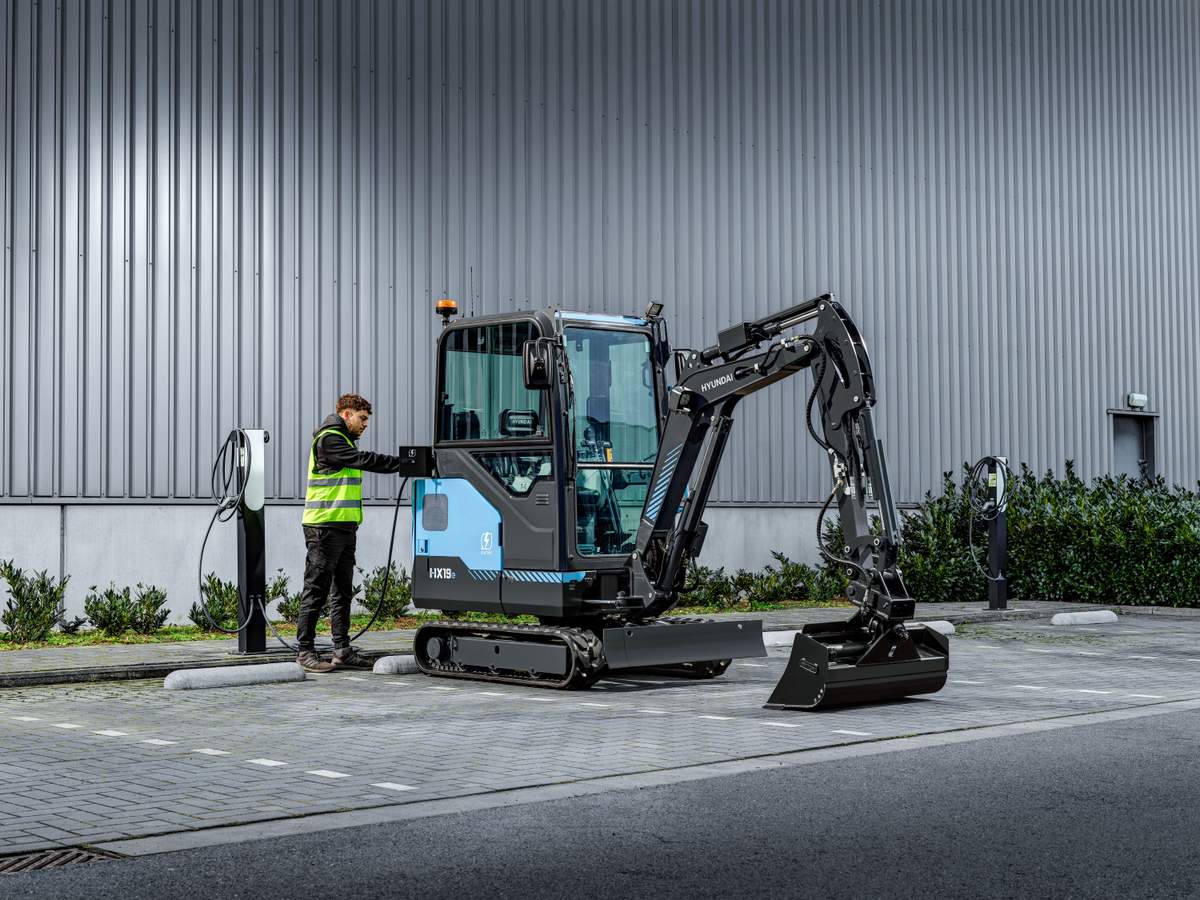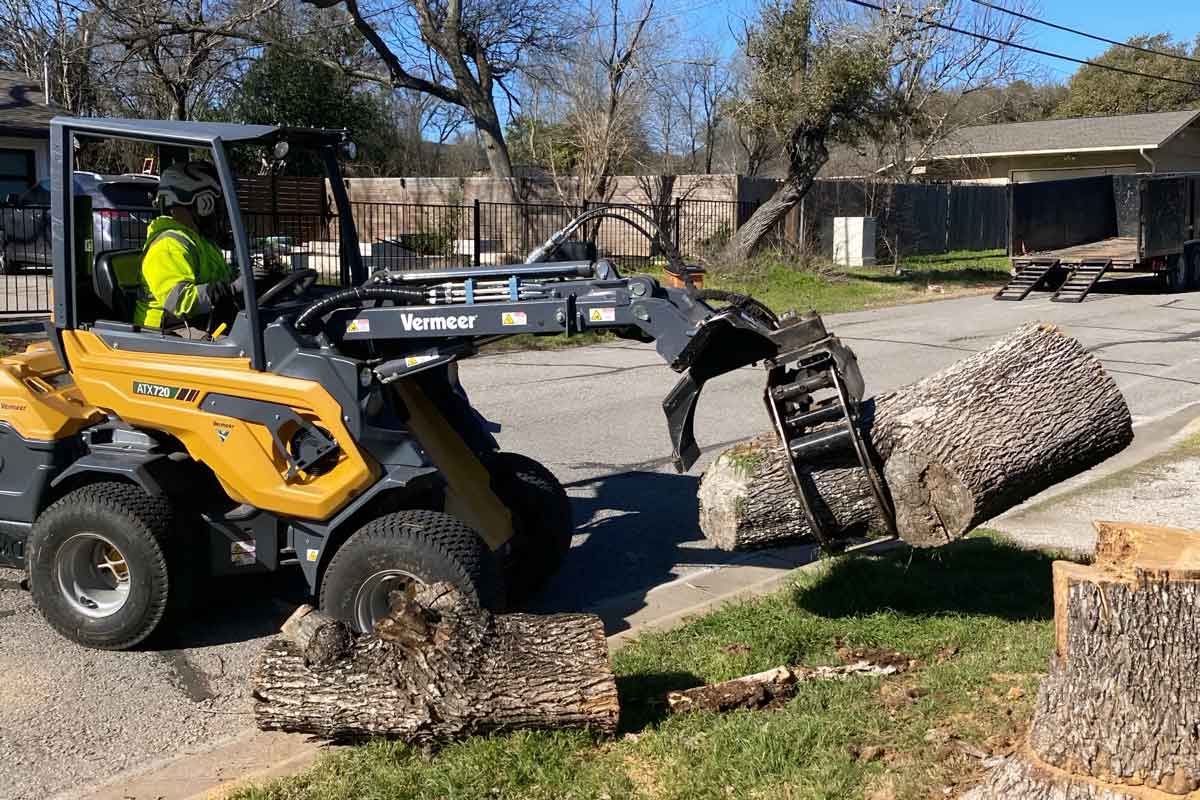Winter Wheel Loaders: How to Outfit Your Compact Wheel Loader for Snow Removal
Wheel loaders have become a go-to machine for snow removal in the winter because of their perfect combination of size, agility, visibility and safety. If you are ready to commit some machines in your fleet to some full-time snow removal duties when the weather turns, here is how to create the ultimate winter wheel loader.
Understand the application
As always, start by understanding the variety of applications you may encounter. While we often think of wheel loaders moving snow in large, airport-runway-type applications, some machine makers make units small enough to tackle sidewalks. Utilizing a wheel loader like Wacker Neuson’s WL32, a contractor can traverse a 48-in. sidewalk, utilizing the attachments that would traditionally fit on a skid steer is a big advantage for an operator both financially and operationally. In terms of size, wheel loaders boast a wide range. In terms of savings, a wheel loader can equate to 30 percent fuel savings and 75 percent in tire wear savings over that traditional skid steer in a similar application.
In operation, a wheel loader’s comfort and visibility are huge. An operator sitting higher and looking down on the attachment and the areas surrounding the machine can more easily maneuver the machine and avoid possible obstructions.
To see these advantages though, the machine must be properly outfitted with the right package. According to Brent Coffey, product manager for loaders at Wacker Neuson, a machine operating on sidewalks will likely use a combination of buckets, plows and hydraulic attachments such as a snow blower. These machines should have narrow tires, premium lighting, high flow, 14-pin auxiliary hydraulic controls and manual speed/throttle controls.
“For sidewalks, you tend to see more V-blades, fixed blades, snow blowers, brooms and more,” Coffey says. “For heavier snows, the blades work great. However when there are larger piles or drifts, the snow blower is the most efficient way to clear it. With lighter dustings where the snow is dry, many operators will use a sweeper to move the snow.”
A machine that is going to operate in a parking lot and only use a bucket and snow push will likely want severe-duty tires and premium lighting.
“Parking lots are going to mainly be blades, box pushes, buckets for stacking and other non-hydraulic attachments,” he says. “The main objective of this scenario is to move material.”
But it is likely you will have some combination of applications in which to navigate this winter — some sidewalks, some parking lots, maybe a shopping center with a mix of both — and these all might require some significant travel time.
Wheel loaders are optimal for such a situation as they are easily driven from project to project and, as Coffey notes, “with the operators sitting higher and a panoramic view from the cab, visibility is significantly better than other machines.”

Visibility is imperative when performing snow operations. Find a compact loader that provides the best line of sight. Pictured: a Kawasaki-KCM wheel loader.
The all-around package
Snow removal jobs usually mean tough hours, requiring late nights and/or early mornings for an operator. Because of this, operator comfort is important, not just as a nice gesture but because of how it adds to both the productivity and safety of a job. Wheel loaders can be outfitted with heated cabs, adjustable seats, ergonomic controls and satellite radios, which create a comfortable working environment in which to complete tasks on a cold, dark day. The greater the comfort leads to fewer distractions and increased motivation and focus.
“Another consideration is visibility,” states Wayne Powell, senior manager, product support with Kawasaki-KCM wheel loaders. “Not just from a comfort standpoint, but a safety standpoint. While standard wheel loaders will do the job with snow removal attachments, consider the additional maintenance required, such as winter wiper blades, supplemental wipers and well-maintained defrosters.”
Since a lot of snow removal takes place overnight, there may be a need for supplemental lighting not only for safety but to do a good job and avoid curbs, hydrants and other obstructions. New long-life LED lamps are widely available, which require very little energy, making it easy to add them to a lighting circuit. However, since the lens doesn’t get hot, snow and ice can cover the lens reducing effectiveness.
Some manufacturers or aftermarket outfitters have specific snow removal packages that can include heated cabs, powerful lighting and speed and throttle control. That last piece is important because it allows attachments that require full rpm but slow travel speed (such as snow blowers, brooms and other implements) to maximize performance. These packages could also come with an engine preheater system to warm the engine fluids and hydraulic tanks before starting, ensuring proper and smooth flow throughout the machine.
For example, in the Wacker Neuson lineup, the compact WL32 has high-flow hydraulics while also being able to fit on a sidewalk. On the other side of the spectrum, its WL60 has a 100-hp engine and optional 40-gpm high flow feature. Case Construction Equipment’s 621F and 721F wheel loaders feature powerful and quick hydraulics, and four programmable power modes that allow users to match the machine output to available engine power.
“Supplying the oil to the loader hydraulic system and attachments in severely cold weather (usually considered below 0° F) requires cold weather hydraulic oil,” Powell says. “Your manufacturer’s operation and maintenance manual will describe the recommended hydraulic oil for cold weather.”
Slips and falls are way more likely in winter conditions, so wheel loader features like entering and exiting the machine from a side door versus climbing over a skid steer’s front bucket has a huge safety benefit. Plus, sitting up higher in a wheel loader (some are even available with floor to ceiling windows) allows for greater visibility — another bonus in winter.
Attachments
Obviously you don’t want to fully winterize a wheel loader and then send it out into the tundra with attachments that don’t get the job done the right way. Here, you’ll want to consider the method of attachment and the attachment’s specialization in snow removal.
Certain wheel loader manufacturers offer a full line of snow removal attachments including plows, blowers, brooms and additional options like salt spreaders, studded tires and even tire chains. Some wheel loader manufacturers feature skid steer quick-attach plates that allow you to use any skid steer attachments on your compact wheel loaders, and some simply use proprietary plates and unique implements.
Snow blades are the most popular snow removal attachment. Available in widths of 10 to 16 ft, blades are capable of clearing covered areas by pushing the snow away and off to the side. Brooms are more ideal for light snow removal (less than 3 in.), and buckets are handy for moving inconvenient snow piles out of the way. Snow blowers come in a wide range of sizes as well as costs, with larger blowers requiring more hydraulic flow but maximum performance. You’ll also want to consider the ways your attachments complement one another to more efficiently complete a job.

Case Construction Equipment’s 621F and 721F wheel loaders include heavy-duty axles with auto-locking front and open rear differentials for optimal traction in virtually all conditions.
Maintenance
Once built, the ultimate winter wheel loader must be maintained as such. Some features hopefully were built in to help maintain performance, such as an engine preheater system to warm the engine fluids and hydraulic tanks before starting to ensure proper and smooth flow through the machine. But there are some maintenance items you’ll need to remember, such as using thinner grade oil to properly lubricate engine and hydraulic systems.
When replacing the hydraulic oil, it is important to bleed hydraulically actuated brake systems. The standard hydraulic oil, if it remains in the steel lines from the brake valve to the wheels, will stiffen up and restrict the oil going to the brakes and returning from the brakes. This oil does not circulate, so it never warms up. This is often overlooked and can result in slow brake application or dragging brakes and very expensive repairs.
Are you using the wheel loader for deicing? Salt is highly corrosive, rusting out a machine and deteriorating its rubber components much quicker than normal. Be sure to wash your wheel loader every day and also apply an aggressive media protection, like a spray-on corrosion inhibitor, to all main metal components that are susceptible to rust. Snow removal is likely just one task in a year-round list of tasks, but if given enough thought ahead of time, your current or next wheel loader could save you time and money.
Chris Crowell is a contributing editor to Compact Equipment.





The wheel loader is very effective and easy in removing snow
wheel loader is really convenient, which makes your work easier.
Wheel loaders do have many application, no matter for construction building or daily uses.